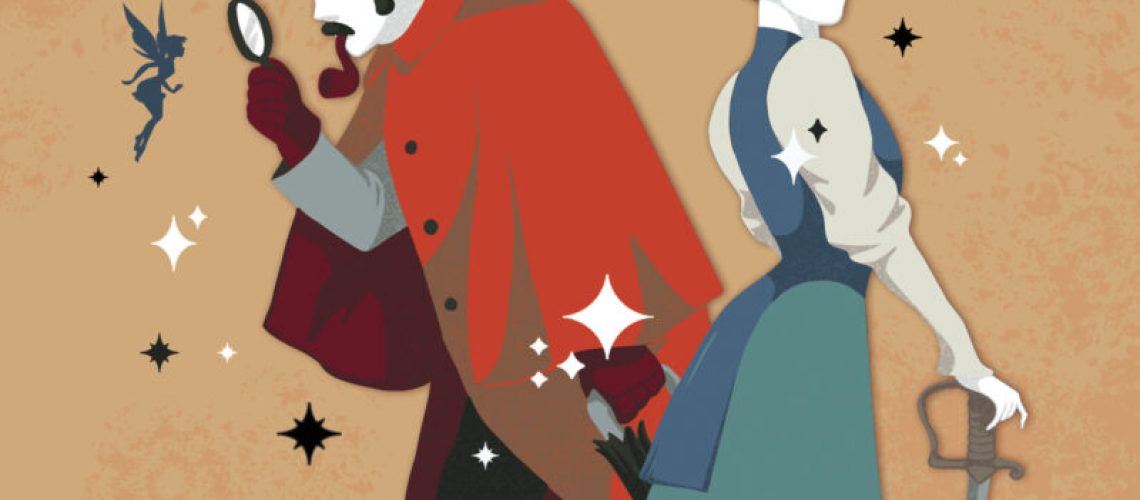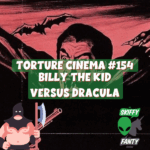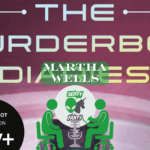I was intrigued by the promotional copy for The Adventures of Mary Darling: “In this subversive take on Peter Pan and Sherlock Holmes, a daring mother is the populist hero the Victorian era never knew it needed.” Then I saw that the book is by Pat Murphy, who has won Nebula Awards, the World Fantasy Award, and the Philip K. Dick Award; also, I really liked her space opera There and Back Again (1999), a science fictional twist on The Hobbit*. Considering all of that, I was sure I would enjoy this new book, and it turns out this was fully justified! Mary and the other viewpoint characters are a lot of fun to follow through their adventures and evolutions, and Murphy’s insights into storytelling and explorations of the Victorian/Edwardian period are as entertaining as they are enlightening — Murphy examines historical horrors rather than glossing over them, but her characters overcome these challenges with verve.
Mary Darling (the mother of Wendy, John, and Michael, who were lured away to the fantastical island of Neverland by Peter Pan), her complex backstory, and her determination to overcome obstacles and save herself and others are completely engaging. Her uncle John Watson, her friend Samuel Smalls, and various other associates are admirable in their own ways. Mary’s husband, George, starts off as a useless jerk but gets a lot better, and even the main pirate character has some good qualities. Only Sherlock Holmes and Peter Pan remain completely unlovable, but then, neither craves love, only admiration, at least in Murphy’s versions of their characters.**
This book returns again and again to various versions of people’s stories, and who gets to tell them (third person past tense), about themselves and each other. Primarily, this is Mary’s story, from her viewpoint, and sometimes she has quite a struggle to maintain and recover her old adventurous self vs. the ornamental wife and mother that George and others think she is/should be. When her concerned uncle involves Sherlock Holmes in the mystery of the missing children, the detective begins constructing his own narrative about Mary’s dubious past, and her possible involvement in the abduction, especially after Mary herself goes missing (as she jettisons the obstructive “help” from Holmes and her relatives, to seek aid from older allies in finding her children).
Other people who struggle to maintain their own stories and versions of themselves are Sam, a former Oceania islander living in London at the start of the book (sometimes stereotyped by others as a cannibal, sometimes resisting that and sometimes making use of it), and the “Indians” shipwrecked on Neverland (they reject that label, being Kanien’kehá:ka who escaped a reservation and governmental oppression to form a touring Wild West show, portraying tall tales for self-freeing profit), who aren’t interested in becoming another target group for Peter and his followers to attack. Conversely, the main pirate captain in this book is someone who actively cultivates a larger-than-life reputation, or story about himself, to save trouble, kind of like the Dread Pirate Roberts in William Goldman’s The Princess Bride. The ladies who run society on a “pirate resort” island that’s as close as the real world gets to Neverland also have their own outer and inner “stories” or selves. (Readers also see a very little bit from the perspectives of the mermaids and fairies, but not living in human society, they don’t appear to have conflicting “stories” in the same way.)
Most of the book is about explaining Mary’s complex past, and her trip back to Neverland, and about the lives and histories of her various allies, and about the journeys (physical and mental/emotional) of her “rescuers” (George, John, Holmes, and Sam, who accompanies them more to keep an eye on Mary’s pursuers than out of any idea she needs any of them). Readers won’t see what’s been happening with the Darling children until near the end of the book, although Mary’s flashbacks give a pretty good idea of what they’ve been facing. Once Mary finally gets back to Neverland, she takes decisive action, using some perhaps unexpected but highly appropriate tactics that made me laugh out loud, and the ending is very happy and satisfactory for most people, except the real villain of the piece. Even Holmes is satisfied (or self-satisfied), although mostly sidelined from the action, because he figures out a rational explanation for everything, and gets to expound on it to Watson, who has learned by this time to keep some of his contradictory thoughts, feelings, and experiences quiet, rather than continually laying himself open to Holmes’ ridicule.***
This is far from the first retelling of the Peter Pan story, but it’s one that I highly recommend. Yes, it’s told nonlinearly, with a lot of “previouslys” and other asides, but everything comes together very well in the end, and it’s a very entertaining journey getting to that conclusion. It may even be a comfort book, for people who would like to read a familiar story told in a new way that’s much more sensitive to perspectives from people whose sorts of stories have more rarely been heard in the past.
*According to Wikipedia, There and Back Again (originally published under the pen name of Max Merriwell) was declared in 2016 by the J.R.R. Tolkien estate to be an infringement on his book The Hobbit. Pat Murphy disagreed, considering her book to be a transformative work (and I wholly support this view), but she discontinued publication to avoid continuing the dispute. However, used copies are still available at various venues.
Arthur Conan Doyle’s character Sherlock Holmes fully entered the public domain in 2023. J.M. Barrie’s 1904 play Peter Pan, or The Boy Who Wouldn’t Grow Up, and his 1911 novel Peter and Wendy are in the public domain in most of the world except for the United Kingdom, but I see that amazon.co.uk is offering preorders of The Adventures of Mary Darling anyway, so whatever copyright issues may have existed presumably have been worked out.
**Peter Pan is actually fairly heartless in Barrie’s novel, too. As Murphy explains in her extensive Afterword (and as I’ve seen for myself), it’s against the rules in the novel for the Lost Boys to grow up, so every now and then, Peter “thins them out...” Barrie doesn’t explain whether Peter accomplishes this by exile, murder, or just taking them on increasingly dangerous “adventures” vs. pirates or whatever until they perish, but it’s pretty ominous. Also, in both Barrie’s and Murphy’s books, Peter neglects their nutrition and other forms of care. Again, from Barrie’s novel, “… to him [to Peter] make-believe and true were exactly the same thing. This sometimes troubled them [the Lost Boys], as when they had to make-believe that they had had their dinners.”
Barrie wrote that Peter was a boy who simply refused to grow up and made that stick somehow, but several of Murphy’s characters speculate that he’s not a human at all, but rather some sort of spirit (or fae?) who has been enjoying play-acting British imperial-style boys’ adventures for so long that everything else has been forgotten.
***Some readers may wonder why Murphy threw Holmes and Watson into the Peter Pan universe in her story. She doesn’t address this directly in her afterword, but she does talk about how Peter Pan was a boys’ adventure book set at the height of British imperialism; those types of stories coincided with the Sherlock Holmes stories that also celebrate the same era, in different ways. Holmes acts as a “rational” (or rationalizing) foil against the book’s fantasy elements, whereas Watson, who is at first skeptical, comes to trust the evidence of his eyes, and his boyhood dreams, despite prevailing attitudes; I enjoyed his character arc.
I do think it’s very interesting that Murphy has Watson being partly convinced of the reality of magic through his own experiences, and partly through seeing photographs of children flying, given that Arthur Conan Doyle, the author of the Holmes/Watson stories, was fooled into publishing hoaxed photographs of fairies. That didn’t happen until 1920, though, so it wouldn’t have fit into this novel very well, even had Murphy been inclined to mention it.
Tachyon Press is publishing The Adventures of Mary Darling, by Pat Murphy, on May 6, 2025.
Content warnings: An attempt by her husband to lock Mary up in a “rest home” (mental hospital); references to government entities stealing Native American children and attempting to erase their culture (or just letting them die of neglect), and racism, colonialism, and sexism (all portrayed negatively).
Comps: The short story “Flashlight, Knife, and Flowered Crown” (2021) by Sarah Avery.
Disclaimers: I received a free eARC of this book from the publisher via NetGalley for review.







